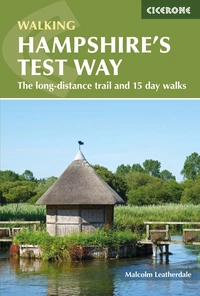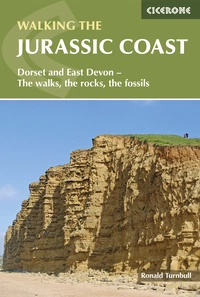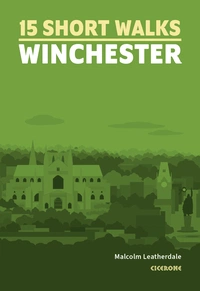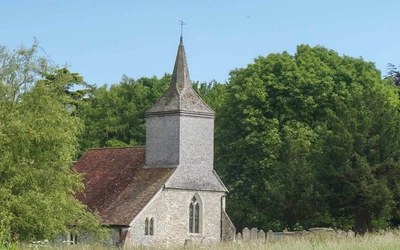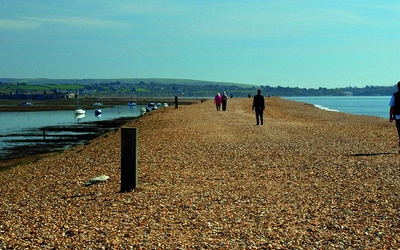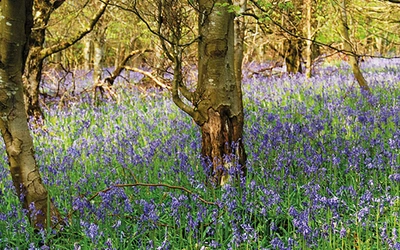History of the New Forest
The New Forest is located between south-west Hampshire and south-east Wiltshire. The New Forest was ‘created’ by William the Conqueror in 1079, as a royal hunting ground named Nova Foresta. At this time, the word ‘forest’ meant an area of countryside, not necessarily woodland, set aside for royal hunting. Read on to learn more about the history of Britain's smallest National Park.
Walking in the New Forest
30 Walks in the New Forest National Park
£12.95
A guidebook to 30 walks of between 3 and 10 miles set throughout the New Forest National Park in Hampshire and Wiltshire. Routes explore ancient woodland, heather-clad heath and dramatic coastline, all within easy reach of Southampton, Bournemouth and Salisbury. Walks for all abilities, easily combined to create longer challenges.
More informationThe New Forest may not be a very hilly landscape and there are no sweeping mountain views, but a walk in the forest takes you into a part of southern Britain that William the Conqueror would probably still recognise. However, this is not some woodland theme park; the forest is a working environment. Around 7000 commoners’ animals graze the open forest, as they have done for centuries; a quarter of the park is farmland, and the forest still produces many tonnes of timber every year. It is these very activities that have helped to preserve the New Forest over the centuries.
New Forest Geology
The New Forest is located in the Hampshire Basin – a shallow dip, or syncline, in the underlying chalk, surrounded by the chalk downs of Hampshire, Wiltshire and Dorset, along with the prominent chalk ridge on the Isle of Wight to the south, which includes The Needles. This chalk was laid down while the area was submerged by seas between 99 and 65 million years ago, in a period known as the Upper Cretaceous.
Subsequent seas, lakes and rivers in the Eocene period (from about 56 to 34 million years ago) laid down layers of gravel, sand and clay over the chalk. These layers have been tilted so that the oldest layers are to the north and the more recent to the south, forming a slightly elevated plateau that slopes towards the coast. Rivers and streams have cut through this plateau to form gentle valleys between low, flat-topped hills.
Overlying these layers, in large parts of the forest, are superficial deposits of gravel that date from the Pleistocene period (2.5 million to 10,000 years ago) when Britain underwent periods of repeated glaciations. Although the ice sheets never reached as far south as the New Forest, the glacial rivers washed large quantities of flint gravel down from the chalk outcrops to the north. The final main geological event took place around 9000 years ago when the area that now forms the New Forest became separated from the Isle of Wight due to rising sea levels.
New Forest History
As mentioned before, the forest was ‘created’ by William the Conqueror in 1079 as a royal hunting ground. However, the area’s history stretches back to at least the Bronze Age – a quick look at the map reveals several tumuli or Bronze Age burial mounds – while in the 5th century the area was known as Ytene, ‘the place of the Jutes’.
People who lived within the forest perambulation (or boundary) were subjected to harsh Forest Law but, over time, this was relaxed and the Verderers were authorised by the Crown to deal with the day-to-day administration of the forest. Move forward to the late 15th century and the New Forest Act was passed, allowing inclosures (enclosed areas) to be created. This marked the gradual change in the role of the forest from royal hunting ground to one of supplying timber; the last king to use his right to hunt in the forest was James II in the 1680s. In the mid 1500s Henry VIII ordered Hurst Castle to be built, one of several large fortifications along the south coast of England; you visit the castle on Walk 29 of Cicerone’s Walking in the New Forest. Situated at the end of a mile-long shingle spit, just a short hop from the Isle of Wight, the castle was built to defend the western approach to the Solent. Just over a century later Charles I was imprisoned here in 1648 before being taken to London for trial and execution. The building was extended during the Napoleonic Wars and again in the 1870s, and the castle remained part of Britain’s coastal defences until 1956.
In the 17th and 18th centuries, the Verderers’ powers were increased to help guard against offences undermining the planting and preservation of oak for shipbuilding; it took between 2500 and 3000 mature oak trees to make one Battle of Trafalgar ship.
The picturesque 18th-century hamlet of Buckler’s Hard was once a bustling shipyard; Walk 26 takes you along the river from Beaulieu to Buckler's Hard. The Master Builder’s House, now a hotel, was built in 1729 and was the home of the Master Shipbuilder. The most famous tenants were Henry Adams and his sons, Balthazar and Edward, Master Builders of ships for Nelson’s Navy, including three that fought at Trafalgar – Swiftsure, Euryalus and Nelson’s favourite, the 64-gun Agamemnon.
It was during the Napoleonic Wars that an optical signalling system developed by the Rev. Lord George Murray (1761–1803) was built to connect Plymouth to the Admiralty in London; one of these signal stations was sited at Bramshaw Telegraph, one of the highest points in the New Forest at 128m (420ft); this is the starting point for Walk 4.
In the late 19th century the restrictions on common grazing were removed and the Verderers’ Court was reformed through an Act of parliament to become the guardians of commoners, common rights and the forest landscape.
During World War II the forest was home to several airfields, including ones at Beaulieu Heath, Holmsley and Stoney Cross, along with the Ashley Walk Bombing Range (visited on Walk 4) to the east of Godshill, while the area around Lepe played an important role in the D-Day campaign (visited on Walk 30).
It's hard to imagine today as you wander over the open heath, but the Ashley Walk range was where many of Britain's experimental bombs were tested, including the largest bomb ever to be dropped in England, the 22,000lb Grand Slam bomb designed by Sir Barnes Wallace.
The most recent chapter in the New Forest’s history began in 2005 when it gained national park status, becoming the 14th national park in the UK.
New Forest Wildlife & Habitats
The forest has a patchwork of habitats that have been shaped since prehistoric times by man and his animals, and each offers a rich variety of plants and animals.
Although less than half of the national park is woodland, woods are a key feature of its natural beauty, with native trees ranging from the coniferous English yew and Scots pine to broadleaved species such as the common oak, beech and silver birch. Good examples of beautiful ancient woodland include Denny Wood (Walk 21) and Brinken Wood (Walk 15), while Mark Ash Wood (Walk 14) is one of the largest beech woods in the forest.
A more exotic tree is the wellingtonia, or giant sequoia, found along Rhinefield Drive, which is visited on Walk 16. At a height of 55m (180ft), these may take the title of the tallest trees in the forest; however, it is the native oaks, such as the Knightwood Oak, that lay claim to being some of the biggest; Walk 14 takes you past this mighty tree. These trees have been pollarded: when it was young the top of the tree was cut off, allowing new growth on multiple branches, resulting in short tree trunks with a very large circumference. Pollarding was a traditional way to harvest wood sustainably, greatly increasing the yield of timber from the tree and allowing the tree to live longer – many examples in the forest are between 400 and 600 years old. However, the pollarding of oak trees in the forest was made illegal in 1698 as the timber was no good for shipbuilding, which required long, straight trunks.
Within the forest there are around 2700 species of fungi and 700 species of wildflower, ranging from rare species such as the blue marsh gentian to the ever-present gorse, whose colourful yellow flowers can be seen throughout the open heath. Although the plant’s spiky foliage should help to protect it from being eaten, it forms a vital part of the New Forest pony’s diet, especially in winter, when other food is scarce. Another widespread plant is common heather – also known as ling – which creates a colourful pale purple carpet across the open forest in late summer.
All six of Britain’s native reptiles (snakes and lizards) are found in the New Forest, as well as three species of newt (smooth, palmate and great-crested); the six reptiles are: adder (or viper) – Britain’s only poisonous snake – grass snake, smooth snake, slow worm – a type of legless lizard – common lizard, and the much rarer sand lizard.
The forest supports a wide range of birdlife, including many woodland birds such as woodpeckers, tawny owls, nuthatches and wood warblers. Areas of conifer are good for seeing siskin, along with the rare and diminutive firecrest. The forest also supports several birds of prey, including sparrowhawks, buzzards, hobbies and kestrels, and rare sightings include the hen harrier and honey buzzard.
Valley mires support important populations of snipe, curlew, lapwing and redshank, whereas the open heaths are home to the likes of woodlark and the UK’s largest breeding population of the rare Dartford warbler, with summer visitors such as Montagu’s harrier and the more nocturnal nightjar.
Along the riverbanks and estuaries you may see herons, little egrets or the vivid turquoise-blue and orange flash of a kingfisher darting along the river. While in winter the coastal stretches, especially between Lymington and Keyhaven, which is visited on Walk 28, see the arrival of large numbers of wildfowl and waders.
The forest is home to a variety of animals, including large numbers of commoners’ stock such as New Forest ponies and cows. Accompanying these are five species of deer: fallow, roe, red, sika and muntjac; the most common being fallow and roe deer, which can often be seen at Bolderwood on Walk 12. Throughout the area, as with much of England, you will probably catch sight of the abundant grey squirrel which, sadly, has replaced the native red.
As dusk approaches you may be lucky and catch a glimpse of the elusive badger or the much rarer polecat. Other mammals that may be seen at dusk are bats; 13 of the 17 native species have been recorded in the New Forest, including the nationally rare Bechstein’s and barbastelle bats.
On the western fringe of the forest is Moyles Court, which dates to the Domesday Book of 1086 when the land was held by Cola the Huntsman. However, we need to jump forward several hundred years to the time of Dame Alice Lisle (1614–1685). Following the Battle of Sedgemoor in 1685, where the Duke of Monmouth’s army was routed, Alice Lisle unknowingly gave refuge to some fugitives from Monmouth’s defeated army. Unfortunately, they were discovered and Alice was arrested. The infamous Judge Jefferies found her guilty of treason and she was sentenced to be burnt at the stake. However, after the intervention of James II she was beheaded instead; the local pub is named after her. Walk 10 leads you past Moyles Court and the pub.
To the south is historic Beaulieu, tucked alongside the Beaulieu River; starting point of Walk 26. This was once home to a grand monastery founded in 1204 after King John granted his former hunting lodge known as BellusLocus Regis (‘the beautiful place of the King’) to the Cistercian monks. However, most of the abbey fell into ruin after Henry VIII’s Dissolution of the Monasteries. The abbey refectory became Beaulieu Church and the great gatehouse was incorporated into the present Palace House, ancestral home of the Montagu family.
Then there is the village of Brokenhurst, where ponies and donkeys roam freely along the streets. Here can be found the Parish Church of St Nicholas, said to be the oldest in the forest, dating back to Saxon times. The churchyard is the resting place of Harry ‘Brusher’ Mills (1840–1905). For many years he had the unusual job of snake catching; armed with just a forked stick and a sack it’s claimed he caught over 30,000 snakes during his lifetime. His nickname ‘Brusher’ came about from him brushing, or sweeping, the cricket pitch before a match at Brockenhurst; you can visit the church on Walk 24.





